 Passions in Death (In Death, #59) by J.D. Robb
Passions in Death (In Death, #59) by J.D. Robb Format: eARC
Source: supplied by publisher via Edelweiss
Formats available: hardcover, large print, paperback, ebook, audiobook
Series: In Death #59
Pages: 368
Published by St. Martin's Press on September 3, 2024
Purchasing Info: Author's Website, Publisher's Website, Amazon, Barnes & Noble, Kobo, Bookshop.org, Better World Books
Goodreads
Homicide Detective Eve Dallas hunts a killer who turns a wedding party into a murder scene in the latest novel by the #1 New York Times bestselling author, J.D. Robb.
On a hot August night, Lt. Eve Dallas and her husband, Roarke, speed through the streets of Manhattan to the Down and Dirty club, where a joyful, boisterous pre-wedding girls’ night out has turned into a murder scene. One of the brides lies in a pool of blood, garroted in a private room where she was preparing a surprise for her fiancée—two scrimped and saved-for tickets to Hawaii.
Despite the dozens of people present, useful witnesses are hard to come by. It all brings back some bad memories for Eve. In her uniform days, she’d suffered an assault in the very same room—but she’d been able to fight back and survive. She’d gotten justice. And now she needs to provide some for poor young Erin.
Eve knows that the level of violence and the apparent premeditation involved suggest a volatile mix of hidden, heated passion and ice-cold calculation. This is a crime that can be countered only by hard detective work and relentless dedication—and Eve will not stop until she finds the killer who destroyed this couple’s dreams before the honeymoon even began…
My Review:
 The villain in Passions in Death was almost as much of a ‘dooser’ as the villain in the previous book, Random in Death. And that’s unfortunate for this particular entry in the long-running (59 books and counting!) In Death series.
The villain in Passions in Death was almost as much of a ‘dooser’ as the villain in the previous book, Random in Death. And that’s unfortunate for this particular entry in the long-running (59 books and counting!) In Death series.
The case in Passions in Death is just a case, just as it was in that previous book. Even if there is a touch of painful nostalgia in it, as the victim, Erin Albright, was murdered at the ‘hen party’ for her and her bride-to-be, in the same club, in fact the very same room, in which Dallas was nearly murdered at her own such party the night before her wedding to Roarke three years previously.
Now Erin is dead, her bride-to-be has a memorial to attend instead of a wedding, and Dallas has to figure out who killed the bright young artist just as her life was about to reach a new pinnacle of happiness.
The problem for Dallas is that, initially at least, all she has is the victim. There are no obvious motives, the usual suspects all have alibis because they were all dancing on stage with each other, drunk and just a bit high on happiness, as the murder took place. Or were they?
 All of which means that Dallas will have to dig, and dig hard, into every single one of those supposedly happy partygoers to discover who in Erin and her fiancée Shauna’s tight-knit little tribe wasn’t nearly so happy as they pretended to be.
All of which means that Dallas will have to dig, and dig hard, into every single one of those supposedly happy partygoers to discover who in Erin and her fiancée Shauna’s tight-knit little tribe wasn’t nearly so happy as they pretended to be.
Someone who was cold and calculating enough to plan what initially appears to be a perfect murder, while still hot-headed and vicious enough to strangle a victim who trusted them up close and personal via a piano wire digging viciously into their neck.
It’s not an easy case, made more difficult by Dallas’ own memories of that room, and of its location at an old and dear friend’s club. But it’s Dallas’ job, and she’s damn good at it – even when the initial leads are as slim as they are in this case.
Escape Rating B-: While this story doesn’t represent a trip to the angst factory for either Dallas or Roarke, it represents a bit of a literal return to the past in the way that the story circles back to a few of the locations of the earliest days of Dallas’ life in New York City.
So the story manages to touch on a bit of nostalgia – without diving into the dark corners of either of their psyches. That they have places that feel nostalgic in the story is a reminder that, although the writing of this series has taken 30 years of the author’s and the reader’s time, it has also encompassed a bit over three years in Dallas’ and Roarke’s lives.
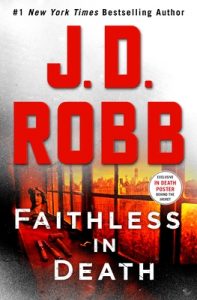 A lot has changed for both of them, and for the found family they have gathered around them, in those three years, more than enough for them to get a bit nostalgic at revisiting earlier scenes, but not nearly as much change as the world outside the series has experienced in three DECADES.
A lot has changed for both of them, and for the found family they have gathered around them, in those three years, more than enough for them to get a bit nostalgic at revisiting earlier scenes, but not nearly as much change as the world outside the series has experienced in three DECADES.
I’ve said in my reviews of many of the books in this series that the cases tend to fall into two categories. Sometimes a case is just a case – and this entry in the series is definitely one of those. Sometimes the case threatens a member of Dallas and Roarke’s extended family or does a deep dive into the dark parts of one or both of their pasts. Those stories get painful, and yet they are often the most compelling of the series.
As long as they don’t happen too close together, because no one does well dredging up that much trauma too often – not even the reader.
And not that the ones that are just cases can’t also be compelling. I’m thinking particularly of Origin in Death as well as the more recent Faithless in Death. But this one just wasn’t, and that’s because the killer was even more of a ‘dooser’ (that’s dick+loser) than the villain in Random in Death.
 Come to think of it, their dooserness wasn’t the only thing the two villains had in common. Which doesn’t help the case for the story or the doosers.
Come to think of it, their dooserness wasn’t the only thing the two villains had in common. Which doesn’t help the case for the story or the doosers.
There also wasn’t nearly as much news about the fam as I normally find both comforting and amusing in this particular entry in the series. This could also be my own disappointment carrying over to my feelings about the whole thing, as I was REALLY looking forward to reading this and it just wasn’t as compelling or comforting a read as I hoped.
Your reading mileage may certainly vary.
Howsomever, the next book in the series, Bonded in Death, looks fascinating as it looks like a trip to the angst factory, not for Dallas or Roarke, but for Roarke’s father-figure, his majordomo Summerset. Hopefully this new book, coming in February, 2025, will represent a return to form after Passions in Death and Random in Death, which were okay but just not up to the series’ usual high standards.

 Every Time We Say Goodbye (Jane Austen Society, #3) by
Every Time We Say Goodbye (Jane Austen Society, #3) by  I picked this up because I loved the author’s earlier book,
I picked this up because I loved the author’s earlier book,  Escape Rating B: Before I get to the story of the book, I absolutely need to say something about the audiobook. Specifically, that the audiobook is excellent. The reader, Juliet Aubrey, was a perfect choice and she made the whole thing better and carried me through even at points where I wondered how the parts of the story connected to each other because she was just awesome.
Escape Rating B: Before I get to the story of the book, I absolutely need to say something about the audiobook. Specifically, that the audiobook is excellent. The reader, Juliet Aubrey, was a perfect choice and she made the whole thing better and carried me through even at points where I wondered how the parts of the story connected to each other because she was just awesome. .
.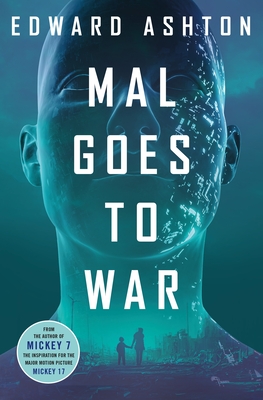 Mal Goes to War by
Mal Goes to War by 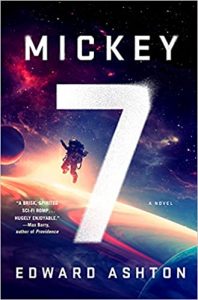 Because Mal isn’t human at all. He’s a free A.I., or as his people prefer to be called, a Silico-American. He’s merely observing this stupid war from the perspective of an otherwise fairly autonomous but not intelligent drone when he gets the wild and crazy idea to see what it would be like to have a body.
Because Mal isn’t human at all. He’s a free A.I., or as his people prefer to be called, a Silico-American. He’s merely observing this stupid war from the perspective of an otherwise fairly autonomous but not intelligent drone when he gets the wild and crazy idea to see what it would be like to have a body.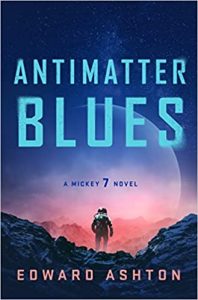 What hooks the reader, or at least this reader, from the very first page is Mal’s conversation with his two fellow A.I.s, Clippy and !HelpDesk. They’re all snarky to the max, and none of them think much of humanity. To them, we’re entertainment – and we’re bad, boring entertainment at that.
What hooks the reader, or at least this reader, from the very first page is Mal’s conversation with his two fellow A.I.s, Clippy and !HelpDesk. They’re all snarky to the max, and none of them think much of humanity. To them, we’re entertainment – and we’re bad, boring entertainment at that.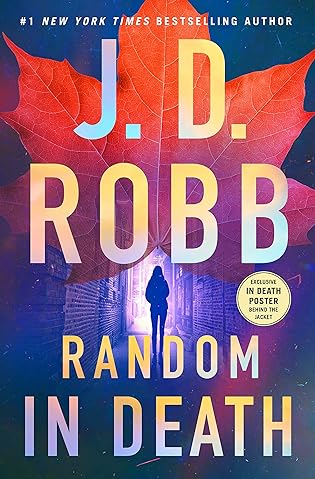 Random in Death (In Death, #58) by
Random in Death (In Death, #58) by 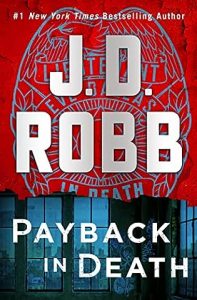 Escape Rating B: Learning how all my ‘book friends’ were doing in this latest entry in the
Escape Rating B: Learning how all my ‘book friends’ were doing in this latest entry in the 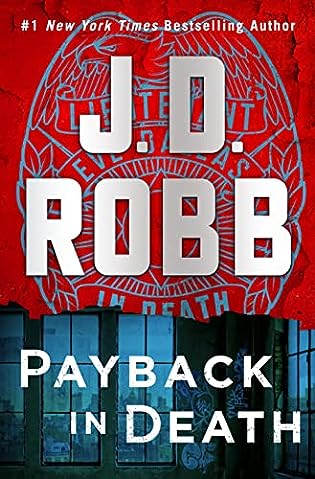 Payback in Death (In Death, #57) by
Payback in Death (In Death, #57) by  Escape Rating B: At this point, I’m here to see how all my ‘book friends’ are doing after whatever happened in the previous book in the series (which in this case was
Escape Rating B: At this point, I’m here to see how all my ‘book friends’ are doing after whatever happened in the previous book in the series (which in this case was 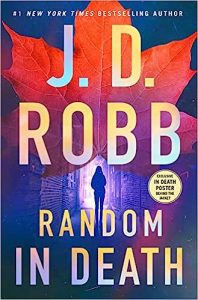 And that the investigation displayed yet again the reasons that Dallas and her squad are the best at what they do.
And that the investigation displayed yet again the reasons that Dallas and her squad are the best at what they do.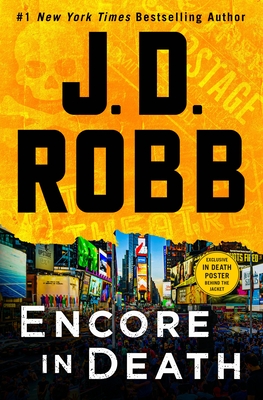 Encore in Death (In Death, #56) by
Encore in Death (In Death, #56) by 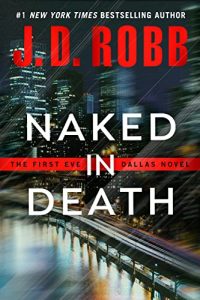 Figuring out what those ‘marriage rules’ are in her own marriage is a work in progress for Dallas. She expected to go through life alone – she certainly never expected to fall in love and get married to anyone, let alone to an ex-thief turned business mogul. All of which is pretty much the story of the entire
Figuring out what those ‘marriage rules’ are in her own marriage is a work in progress for Dallas. She expected to go through life alone – she certainly never expected to fall in love and get married to anyone, let alone to an ex-thief turned business mogul. All of which is pretty much the story of the entire 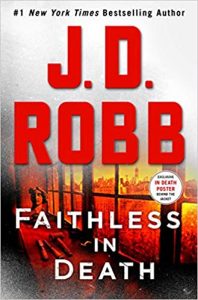 All things considered, however, this isn’t one of the great cases in Dallas’ career – not nearly as absorbing in itself as last year’s
All things considered, however, this isn’t one of the great cases in Dallas’ career – not nearly as absorbing in itself as last year’s 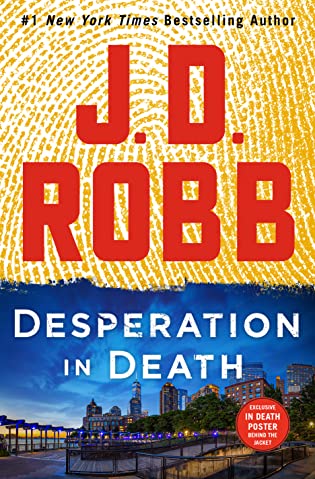 Desperation in Death (In Death, #55) by
Desperation in Death (In Death, #55) by 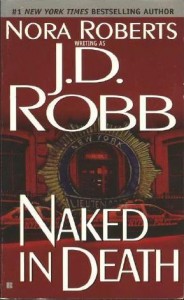 The desperation that leads to the death that brings Eve Dallas and her ever-expanding crew onto this case is one that Eve is entirely too familiar with. It’s the desperation of a girl who has been trapped into a life where she is merely an object for other people’s abuse and other people’s pleasure.
The desperation that leads to the death that brings Eve Dallas and her ever-expanding crew onto this case is one that Eve is entirely too familiar with. It’s the desperation of a girl who has been trapped into a life where she is merely an object for other people’s abuse and other people’s pleasure.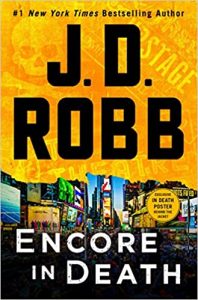 All of that is a way to loop back around and say this is a solid and solidly entertaining entry in the series for long-time fans. If you love Dallas and Roarke you’ll enjoy this season’s peek into their lives as much as I did.
All of that is a way to loop back around and say this is a solid and solidly entertaining entry in the series for long-time fans. If you love Dallas and Roarke you’ll enjoy this season’s peek into their lives as much as I did. The Bodyguard by
The Bodyguard by 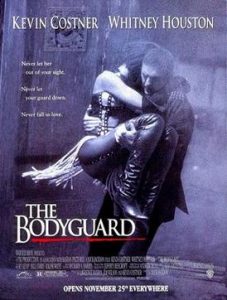 It’s not exactly a surprise that this a bodyguard romance. After all, the title does pretty much give it away. But before your head starts playing “I Will Always Love You” on endless repeats, this book’s version of that popular trope would have Whitney Houston guarding Kevin Costner. Which is more than a bit of a twist, at least if that’s the picture you have in your head.
It’s not exactly a surprise that this a bodyguard romance. After all, the title does pretty much give it away. But before your head starts playing “I Will Always Love You” on endless repeats, this book’s version of that popular trope would have Whitney Houston guarding Kevin Costner. Which is more than a bit of a twist, at least if that’s the picture you have in your head. Escape Rating B-: This is a story where I had both the audiobook and the ebook, which means I started by listening to the audiobook. I switched to the ebook at less than a third of the way through – not because I was impatient to see what happened next but because the audio was driving me utterly bonkers.
Escape Rating B-: This is a story where I had both the audiobook and the ebook, which means I started by listening to the audiobook. I switched to the ebook at less than a third of the way through – not because I was impatient to see what happened next but because the audio was driving me utterly bonkers.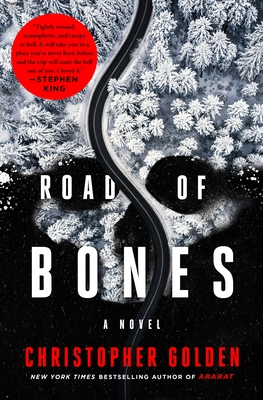 Road of Bones by
Road of Bones by 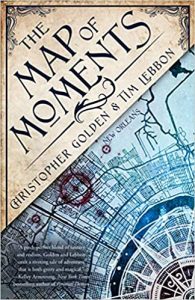 Escape Rating A-: I was willing to take this chilling drive into horror because of the author. Christopher Golden, along with Tim Lebbon, wrote one of the most haunting post-Katrina New Orleans stories to ever ride that slippery line between fantasy, history, myth and horror in
Escape Rating A-: I was willing to take this chilling drive into horror because of the author. Christopher Golden, along with Tim Lebbon, wrote one of the most haunting post-Katrina New Orleans stories to ever ride that slippery line between fantasy, history, myth and horror in 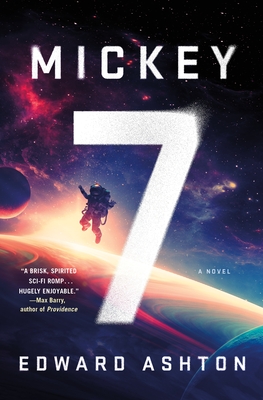 Mickey7 by
Mickey7 by 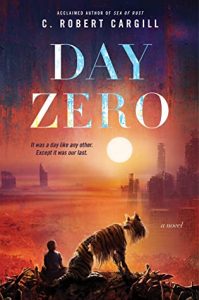 Mickey’s issues are the same ones dealt with in
Mickey’s issues are the same ones dealt with in